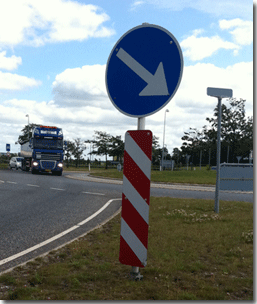Vincent: Yeah, baby, you’d dig it the most. But you know what the funniest thing about Europe is?
Jules: What?
Vincent: It’s the little differences. I mean, they got the same shit over there that we got here, but it’s just… it’s just there it’s a little different.
– Vincent Vega and Jules Winnfield in Pulp Fiction
Last night, as we were driving home from Legoland in Denmark, Daughter started to draft a list of all the countries she’s visited in her five-year long life.
“Finland, right? Italy … Sweden … Norway … the US, what else?” she yelled from the back seat.

“We’re in Denmark now,” Wife and I told her in unison.
“OK! Thanks! Denmark!” she said, and wrote down “D3nmak” on her list. (Yes, all her sentences end in an exclamation point.)
I remember doing the same in first or second grade, but my list was very short. I had only been to Bulgaria, but I remember when my buddies asked me if I hadn’t been to Sweden, or Denmark, or Norway, I just nodded and said, “sure,” but that I didn’t know if those counted because everybody went there.
Back in the late 1990s, I then got in my car, and drove around Scandinavia: around Sweden, down to Helsingborg, through Copenhagen, through Odense – stayed at a bed and breakfast at a farm with a very distinct smell of cow manure – up to the top of Denmark, back to Sweden, over to Norway, then through Sweden again, and back to Helsinki.
And like Vincent, I saw the little differences. One of the most interesting, and funniest, one was the fact that the signs that direct traffic are in different color in different countries. Driving onto an exit in Finland, the signs will be blue and white. In Sweden, they’re blue and yellow, and in Denmark, they’re red and white – just like the colors on the respective countries’ flags.
Three years after my trip through and across Scandinavia, I got into something of an argument with a color psychologist. He had been invited to tell us magazine makers about different colors, and how people associate different things to different colors.
The youthful middle-aged man in an orange golf shirt told us that, for example, if a group of people is supposed to decide the color of a new logo, and they can’t really agree, they will choose blue, because everybody can live with that.
He also said – and this is what got me into the argument with him – that the blue-and-white combination sends signals of low price, low quality.
“Excuse me, but there must be some cultural differences in this, right?” said the little guy sitting on the window sill in the back of the room. (Me).
“You all know the blåvita products, like chocolate and coffee that we have here,” said the man in the orange golf shirt, referring to blue-and-white packaging on no-name retail brands in Sweden.
“… because I’m pretty sure that Finns think that things that are blue and white are nice and pure and beautiful,” I continued.
“Why do think that?” he asked me.
“Because the Finnish flag is blue and white, and that’s why the signs on the highways are blue and white…,”I said.
“Well, according to studies…,” he said.
“… just like yours are blue and yellow and the Danes’ are red and white. I’m sure the Finns like blue and white products, too. We like blue and white in all shapes and forms. That’s why we even sort of like the Greek flag,” I said.
He looked at me and decided it wasn’t worth it to go any deeper into the argument.
“Surely there are cultural differences as well. In Germany, yellow is a color that is associated with high quality whereas over here, we think of it as something cheap,” he said.
I’m sure the man in the orange shirt knew his stuff, except for that one little detail. He did tell us that it’s a good idea to wear something colorful to a meeting so that we’d leave an impression on the other party.
On this trip, I saw on the news that, in Denmark, even the police tape used to isolate a crime scene is red and white.


Nice! I, too, love blue and white, especially when it has a lightning bolt on it:)